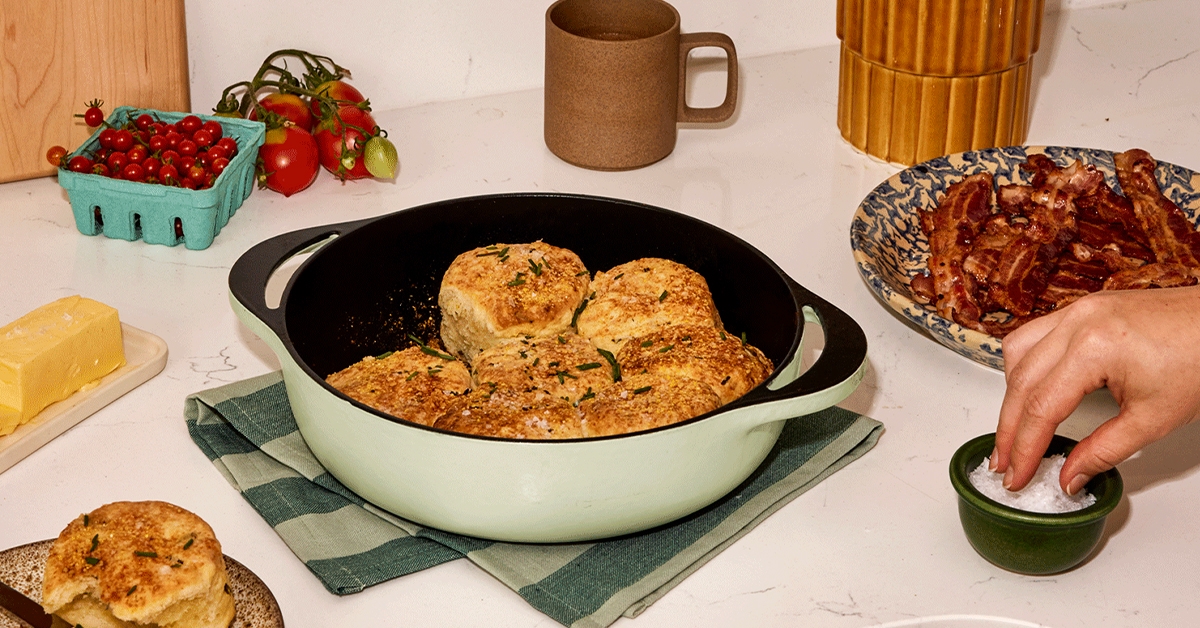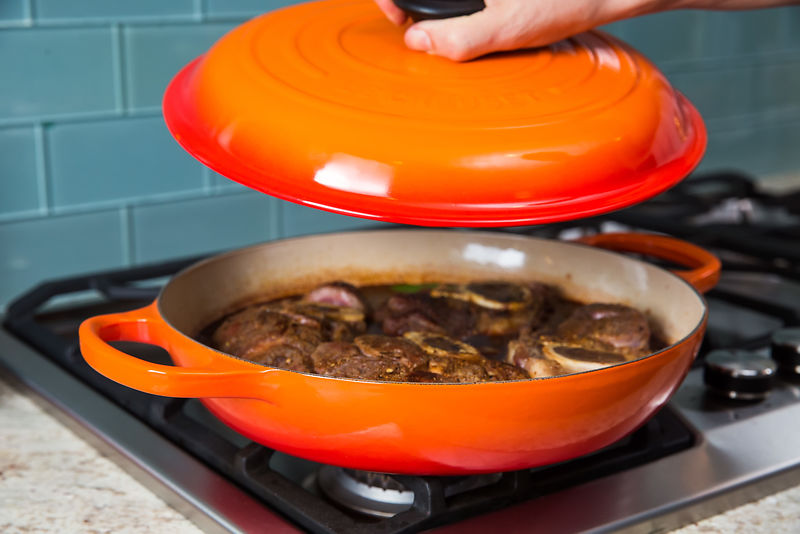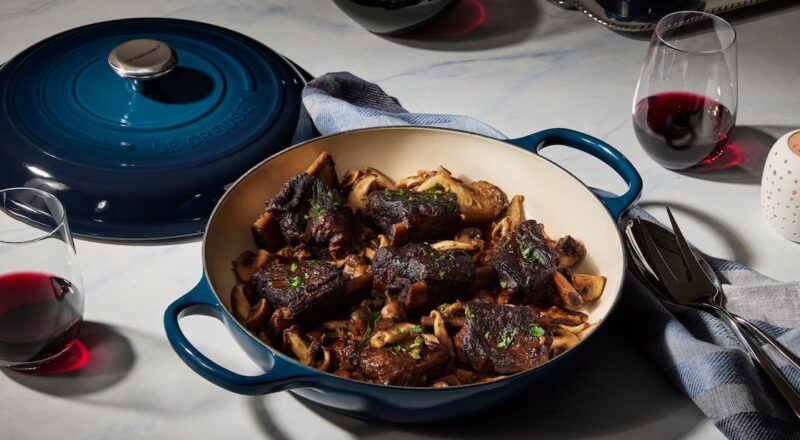Cooking with a cast iron braiser is an art that combines the rich history of culinary traditions with the precision of modern techniques. For kitchen professionals and enthusiasts alike, mastering the art of temperature control is essential to unlocking the full potential of this versatile cookware. In this article, we will explore various cast iron braiser temperature control tips that will help you achieve perfect cooking results every time. Whether you’re searing, braising, or baking, understanding how to manage heat effectively can elevate your dishes to new heights.

Understanding the Basics of Cast Iron Braisers
Before diving into temperature control tips, it’s important to understand what a cast iron braiser is. Known for its heavy-duty construction, this cookware is designed to retain and distribute heat evenly. It’s perfect for slow-cooking, roasting, and even baking. The thick walls and tight-fitting lid help lock in moisture, making it ideal for tenderizing meats and blending flavors.
Key Features of Cast Iron Braisers
Unlike other cookware, cast iron braisers offer unique advantages. Their ability to maintain consistent heat makes them perfect for slow-cooking and roasting. The enamel coating prevents sticking and makes cleaning easier, while the wide base allows for better browning of meats.
Why Temperature Control Matters
Temperature control is crucial for achieving the desired texture and flavor in your dishes. It ensures that food is cooked evenly, preventing undercooked centers or burnt exteriors. Proper temperature management helps in retaining the nutrients and flavors of the ingredients.
Impact on Flavor and Texture
The right temperature can enhance the natural flavors of your ingredients. For instance, searing at high heat creates a caramelized crust on meats, while slow-cooking at low temperatures tenderizes tough cuts. Understanding these nuances can transform your cooking.
Essential Temperature Control Tips
Preheating Your Braiser
One of the first steps in using a cast iron braiser is to preheat it. This ensures that the heat is evenly distributed across the entire cooking surface. Place the braiser on a stovetop over medium heat for a few minutes before adding any ingredients.
Using Medium Heat
For most recipes, medium heat is ideal. It allows the braiser to heat evenly without causing hot spots. Avoid using high heat as it can lead to burning and sticking.
Monitoring Cooking Temperatures
Investing in a good kitchen thermometer can help you monitor the internal temperature of your dishes. This is especially important for meats, as it ensures they are cooked to safe and desirable levels.
Avoiding Temperature Fluctuations
Sudden changes in temperature can lead to uneven cooking. Once you’ve set your heat level, try to maintain it throughout the cooking process. Keep the lid on as much as possible to trap heat and moisture.
Advanced Techniques for Expert Control
Utilizing Residual Heat
One of the benefits of cast iron is its ability to retain heat. After turning off the heat source, your braiser will continue to cook food with residual heat. This can be used to finish dishes gently, preserving their texture and flavor.
Combining Stove and Oven Cooking
Many recipes benefit from starting on the stove and finishing in the oven. This technique allows for initial browning followed by slow, even cooking. It’s perfect for dishes like braised meats and casseroles.
Cleaning and Maintenance for Optimal Performance
Proper maintenance is key to ensuring your braiser performs well over time. Avoid using harsh chemicals or abrasive pads when cleaning. Instead, opt for warm water and a soft sponge. Regularly season your braiser to maintain its non-stick properties.
Preventing Rust
To prevent rust, always dry your braiser thoroughly after washing. Store it in a dry place and consider applying a thin layer of oil to the surface before storing.
For more detailed cleaning tips, check out our guide on rust prevention.
Common Mistakes to Avoid
Using Cold Ingredients
Adding cold ingredients to a hot braiser can cause the temperature to drop significantly. Allow meats and vegetables to come to room temperature before cooking.
Overcrowding the Braiser
Overcrowding can lead to uneven cooking. Ensure there is enough space for steam to circulate and for ingredients to brown properly.
FAQs
What is the best temperature for searing in a cast iron braiser?
For searing, aim for a high temperature of about 450F (232C). This will create a perfect crust on your meats.
Can I use a cast iron braiser on induction cooktops?
Yes, most cast iron braisers are compatible with induction cooktops. However, always check the manufacturer’s guidelines to be sure.
How do I know when my braiser is hot enough?
You can test the heat by sprinkling a few drops of water on the surface. If they sizzle and evaporate immediately, the braiser is ready for cooking.

Conclusion
Mastering cast iron braiser temperature control tips is key to enhancing your culinary skills. With the right techniques, you can achieve perfectly cooked meals that delight the senses. Remember, practice makes perfect, so don’t hesitate to experiment and find what works best for your style of cooking.
For more inspiration and recipes, visit Le Creuset’s blog and discover the possibilities of cooking with a cast iron braiser.
This article contains affiliate links. We may earn a commission at no extra cost to you.

